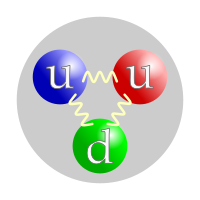
Effect of Er ion substitution on the micro-structural and electrical properties using a polymeric precursor method in PZT52/48 ceramics
Sign Up to like & getrecommendations! Published in 2022 at "Journal of Physics and Chemistry of Solids"
DOI: 10.1016/j.jpcs.2021.110375
Abstract: Abstract Due to their exceptional properties, lead zirconate titanate (PZT) ceramics are used in electronic and microelectronic applications. However, the physical properties of ceramic PZTs must be optimized. Extensive studies to develop donor or acceptor… read more here.
Keywords: electrical properties; microscopy; effect ion; pzt ceramics ... See more keywords

Effect of ion migration in electro-generated chemiluminescence depending on the luminophore types and operating conditions† †Electronic supplementary information (ESI) available. See DOI: 10.1039/c7sc03996d
Sign Up to like & getrecommendations! Published in 2018 at "Chemical Science"
DOI: 10.1039/c7sc03996d
Abstract: The working mechanisms of gel-based electrogenerated chemiluminescence (ECL) devices were revealed using systematic experiments and simulations. read more here.
Keywords: ion migration; electro generated; effect ion; generated chemiluminescence ... See more keywords

The effect on ion channel of different protonation states of E90 in channelrhodopsin-2: a molecular dynamics simulation
Sign Up to like & getrecommendations! Published in 2021 at "RSC Advances"
DOI: 10.1039/d1ra01879e
Abstract: With E90 protonated, the proton acceptor of RSBH+ is E123 with a narrow channel along TM3; while with E90 deprotonated, proton transfer from RSBH+ to D253 generates an approximately open channel along TM2. read more here.
Keywords: channel; different protonation; protonation states; ion channel ... See more keywords

Effect of Ion and Binding Site on the Conformation of Chosen Glycosaminoglycans at the Albumin Surface
Sign Up to like & getrecommendations! Published in 2022 at "Entropy"
DOI: 10.3390/e24060811
Abstract: Albumin is one of the major components of synovial fluid. Due to its negative surface charge, it plays an essential role in many physiological processes, including the ability to form molecular complexes. In addition, glycosaminoglycans… read more here.
Keywords: glycosaminoglycans albumin; chosen glycosaminoglycans; surface; effect ion ... See more keywords